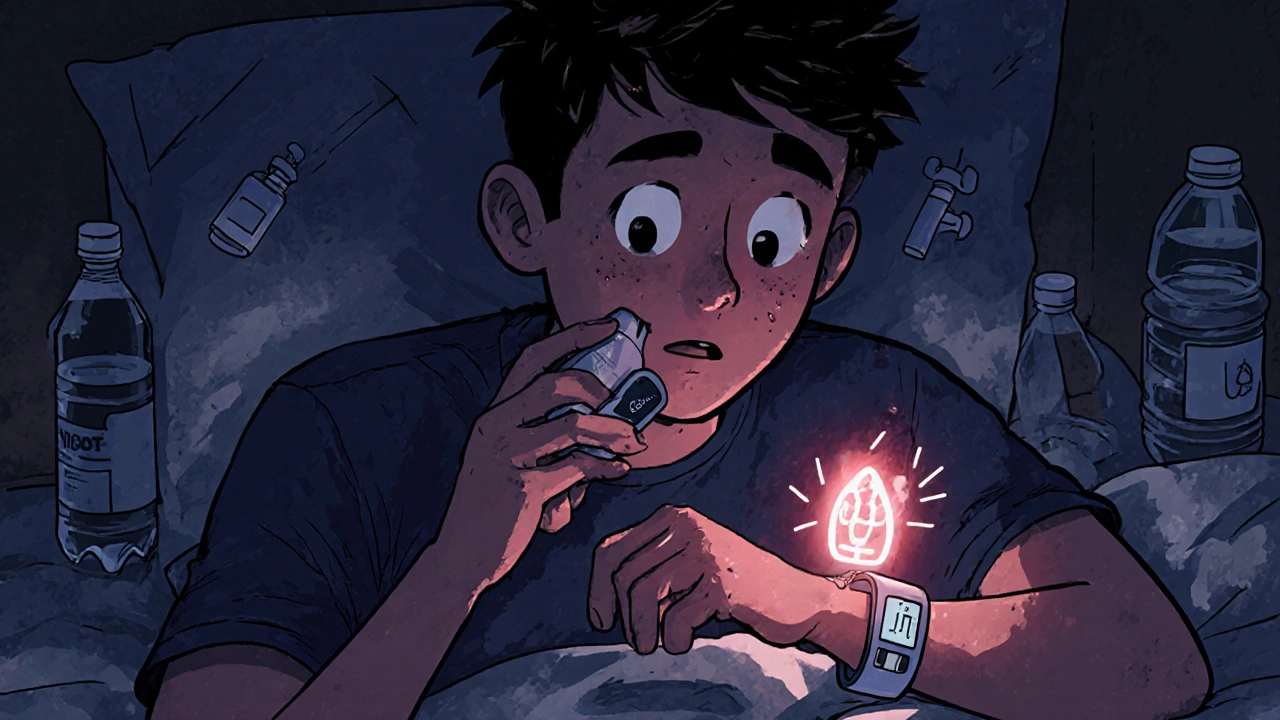High Ketones: What They Mean, Risks, and How to Manage Them
When your body breaks down fat for energy instead of glucose, it produces high ketones, chemicals made by the liver during fat metabolism that can build up in the blood. Also known as ketosis, this process is normal during fasting or low-carb diets—but when ketones rise too high, it becomes a medical emergency. This is especially true for people with type 1 diabetes, where insulin deficiency prevents glucose from entering cells, forcing the body to burn fat uncontrollably.
Diabetic ketoacidosis, a life-threatening condition caused by extremely high ketone levels combined with high blood sugar is the biggest danger. It doesn’t happen overnight. Early signs include frequent urination, extreme thirst, nausea, and fruity-smelling breath. If you’re diabetic and see ketones on a home test strip, don’t wait. High ketones can lead to coma or death if ignored. Even non-diabetics on strict keto diets can develop problems if they’re dehydrated, sick, or overdoing fat intake without enough electrolytes.
Blood ketones, measured in millimoles per liter using a meter similar to a glucose monitor tell you exactly where you stand. A reading under 0.6 mmol/L is normal. Between 0.6 and 1.5 mmol/L means you’re in mild ketosis—fine if you’re on keto, but watch for rising trends. Above 1.5 mmol/L? That’s a red flag. Above 3.0 mmol/L? Get help now. Testing is simple, cheap, and often covered by insurance if you’re diabetic. Many people skip it because they feel fine—but symptoms don’t always show up until it’s too late.
Why does this matter now? More people are trying low-carb diets, and diabetes rates keep climbing. You might not think high ketones affect you—but if you’re on insulin, have pancreatitis, are recovering from surgery, or just got sick with the flu, your body can flip into ketosis faster than you expect. The posts below cover real cases: how people missed the warning signs, what tests actually show, and how medications like insulin, metformin, or even antibiotics can change your ketone levels overnight.
You’ll find guides on ketone testing tools, how to interpret results, what to eat when ketones are rising, and when to call your doctor instead of waiting. There’s also advice on avoiding false alarms—like mistaking dehydration for ketoacidosis—and how to safely adjust your diet or meds if you’re managing this on your own. No fluff. No hype. Just what works, what doesn’t, and what you need to do before it’s too late.

- 13 Comments
Diabetic ketoacidosis is a life-threatening emergency caused by insulin deficiency. Learn the warning signs-from extreme thirst to fruity breath-and what happens in hospital treatment. Early action saves lives.
